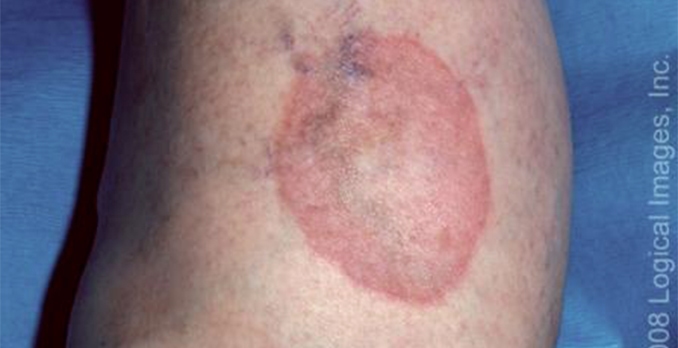
The correct diagnosis is granuloma annulare, a common disorder of unknown etiology that targets the dermis or subcutaneous tissues.
In granuloma annulare, the annular (ring-shaped) or arcuate (arc-like) lesions do not scale, which helps to differentiate granuloma annulare from tinea corporis, for which it is often confused.
The disorder is usually localized. However, in another form, hundreds of smaller lesions can be widely distributed.
This disease is seen more frequently in women and in children and young adults. Typically, annular or arcuate, non-scaly, reddish-brown plaques are seen. In darker-skinned individuals, lesions can appear non-inflammatory and may be pigmented, skin colored, grayish, or hypopigmented. Lesions are commonly localized on the fingers, hands, elbows, feet, lower legs, or ankles.
There are no clear-cut successful therapies. In fact, the majority of the lesions clear without therapy. Patient reassurance and education about the benign nature of this disease are key. Share images of the diagnosis with your patient to reinforce that this is a common condition.
Case presented by Logical Images, Inc.
[taq_review]
